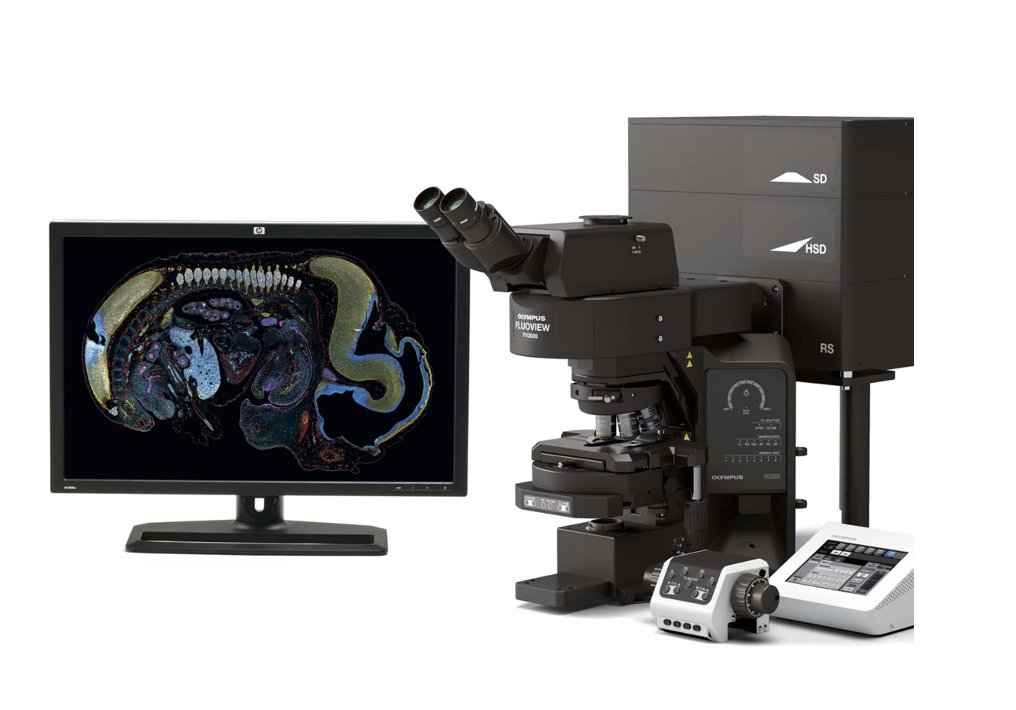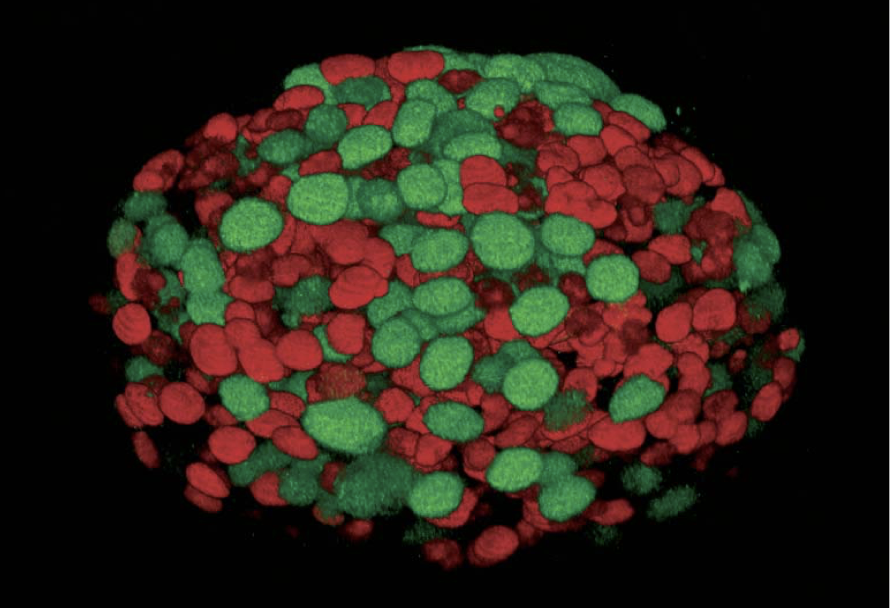The Coriell Cell Imaging Core provides access to cutting-edge optical imaging capabilities for researchers in the south New Jersey area. We offer access to laser scanning and spinning disk confocal microscopes, a light sheet microscope, super resolution microscopy and widefield microscopes for fixed and live imaging.
Our featured confocal microscope is Olympus FV3000 confocal microscope which enables a wide range of imaging modalities, including macro-to-micro imaging, super resolution microscopy, and quantitative data analysis. Other key features of Olympus FV3000 are:
Using proprietary spectral detection technology, the FV3000 confocal microscope's TruSpectral detectors combine high sensitivity with spectral flexibility to detect even the dimmest fluorophores. It has up to 3X more light transmission vs. traditional spectral detection technology. It also has independently adjustable channels to optimize signal detection for each individual fluorophore. Its lambda scanning mode enables accurate spectral unmixing of complex overlapping fluorescent signals. Its variable barrier filter mode provides simultaneous four-channel image acquisition, with up to sixteen channels in virtual channel mode
The FV3000 microscope’s macro-to-micro workflow provides a roadmap for data acquisition, enabling you to see data in context and easily locate regions of interest for higher resolution imaging. It uses a low-magnification 1.25X or 2X objective to quickly capture a large field of view (FOV) map of whole specimens. It can identify regions of interest on the Overlay Map, then switch to a higher magnification objective for high-resolution confocal imaging down to 120 nm with Olympus Super Resolution technology (FV-OSR).
The FV3000RS hybrid scan unit uses a galvanometer scanner for precision scanning as well as a resonant scanner, ideal for high-speed imaging of live physiological events. It can capture video-rate images with a large FOV using the resonant scanner, featuring speeds from 30 frames per second (fps) at FN 18 all the way up to 438 fps using clip scanning.
Time-lapse experiments require consistent focus and low phototoxicity to the sample. Olympus’ TruFocus unit helps maintain focus during live cell imaging despite changes in temperature or added reagents. The FV3000 microscope’s high-sensitivity detector requires significantly less laser power while the resonant scanner reduces laser illumination time, lowering phototoxicity for more physiologically accurate confocal imaging data.
Because the refractive index of silicone oil is close to that of living tissue, the silicone objectives can achieve high-resolution observation deep inside tissue with minimal spherical aberration. Its refractive index match delivers an ideal focal volume, resulting in perfect volume reconstruction and enabling high-resolution confocal imaging of large living organisms. Its long working distances enable detailed microscopic imaging at depth. It also can see data unfold in real-time and easily observe structures with 3D reconstruction software.
Contacts:
Dr. Jerry Han, Email
Dr. Jian Huang, Email

Olympus FLUOVIEW FV3000 Laser Scanning Microscope.

Fucci induced Spheroid of HT29 cell line
Yuji Mishima, Ph.D., Kiyohiko Hatake M.D., Ph.D. Clinical Chemotherapy,
Cancer Chemotherapy Center, Japanese Foundation for Cancer Research.